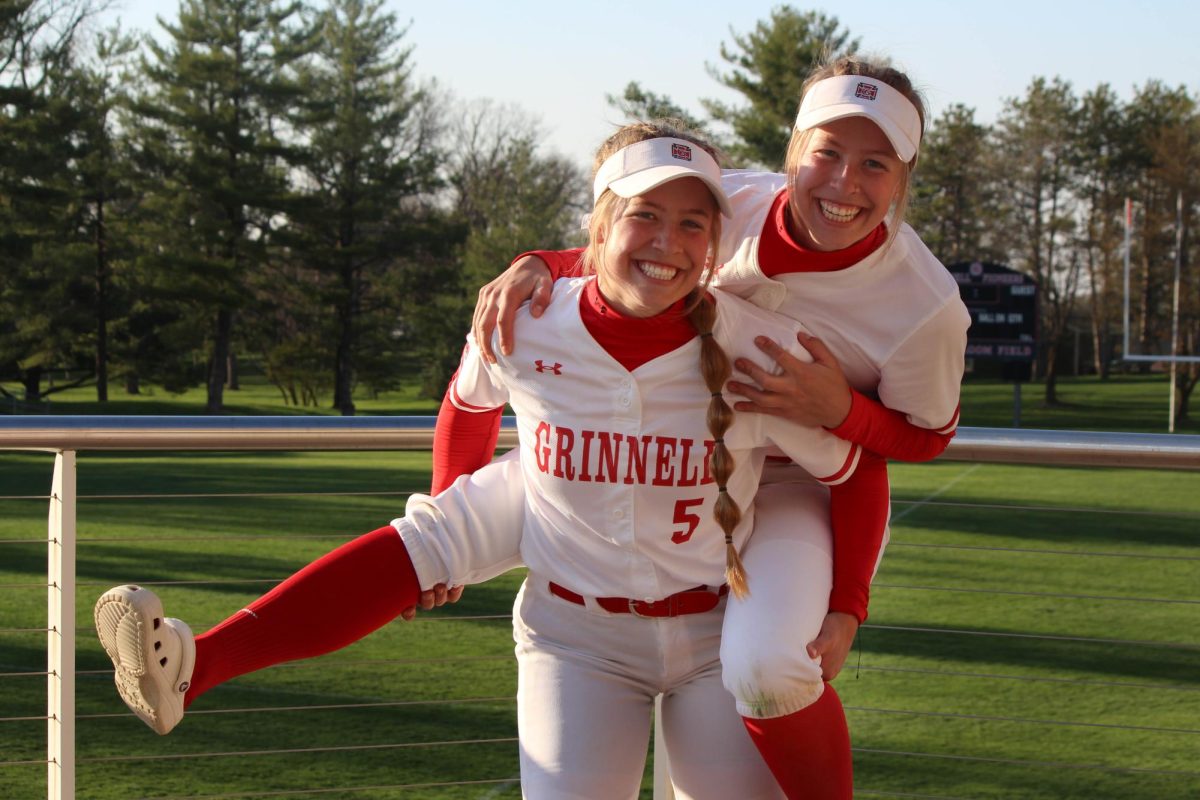By Christopher Squier
Before the country had standard time zones, the Grinnell telescope set the standard time for Iowa and was just the beginning of a long history of astronomy at Grinnell. Now, every Friday, a group of seven or so students meets with Professor Cadmus to discuss astronomical queries, confusions and news. Additionally, they are building a working telescope.

Molly Gallagher ’14 is one of those students involved in the Friday afternoon Astronomy Discussion Club.
“We have a freeform discussion every other week,” she said. “People come in with news or questions about astronomy.”
According to Gallagher, the group discusses various topics from alien life and the evolution of the universe to what makes each type of star a certain type and different research projects going on at Grinnell.
“We’ve discussed a wide range of things, about what’s going on in the larger astronomical community. We were talking the other day about asteroids and the possibility of asteroids hitting Earth,” Gallagher said. “We’ve talked other times about whether we’ve found planets like Earth and what is the likelihood of finding Earth-like planets.”
Gallagher has been interested in astronomy for a long time. In high school, she took a class on astronomy and worked at a planetarium, teaching and interacting with visitors. However, any student, regardless of their background is physics, is welcome to join to group discussion.
“There are third years and fourth years,” Gallagher said, “that have intense physics questions to ask, and then there are other people who have no interest in being physics majors or going into astronomy as a career, but they come because they think it’s interesting.”
The telescope is a special project for the Astronomy Group this year. Every other week, they stop their discussion to pull out a grinding stone to work on the mirror for their telescope.
“We have a piece of glass and a grinding stone,” Gallagher said, “and also different levels of grit, and then we take water and grind the stone. It won’t be a telescope which we’ll use for scientific measurements, but it will be good enough to look at the moon and maybe see Mars.”
Professor Bob Cadmus of the Physics department leads the Astronomy group discussion and is one of the professors researching astronomy at Grinnell, along with gamma ray astronomer Professor Charlie Duke.
Cadmus said the astronomy group started many years ago with his summer students. “I wanted to have an opportunity for them to talk about things that were more broadly spread out in astronomy than just what they were doing. We started meeting once a week to do that, and they enjoyed it, so we continued doing it throughout the academic year and we’ve been doing it ever since.”
“The overall astronomy program is a little bit mysterious,” Cadmus said. “If you look at the catalog, you discover that there’s no astronomy department and there’re almost no astronomy courses. Really, for students who want to go on in astronomy, the only course is a two credit astrophysics course. So it doesn’t look like we’re doing much astronomy.”
Despite this, Cadmus continued, Grinnell actually has a surprisingly strong program to prepare students for astronomy. On average, he estimates that Grinnell turns out one Ph.D. Professional Astronomer each year, which is amazing for what seems like a small program at a small school.
“The key,” Cadmus said, “is that what students who have a serious interest in astronomy need is a strong physics background. The things that we put their coursework into are a strong physics background and a liberal arts education.”
Historically, Grinnell had an observatory at the top of Goodnow hall and a small telescope on the lawn outside of Goodnow.
“It was used to observe the stars before the country had standard time zones,” Cadmus said. “So Grinnell College was the time standard for the railroads in this part of the country. [Our astronomy program] got started that way.”
The Goodnow telescope was built sometime around 1911. However, it disappeared in the decades afterwards.
“There was a long hiatus where there was not much astronomy going on,” Cadmus said.
Nevertheless, the astronomy program picked up again with the building of the Grant O. Gale Observatory in the summer of 1983 and, as Cadmus put it, “We’ve been using it heavily ever since.”
The Astronomy Discussion Group meets every Friday at 4:15 in Noyce 1022. If interested in the observatory, look for posters for the upcoming Open House, date and time to be determined.

































































